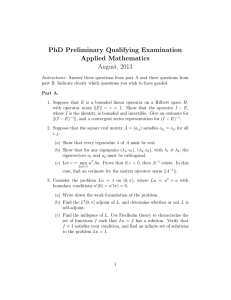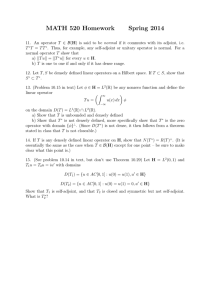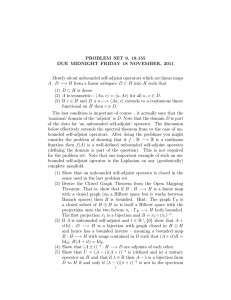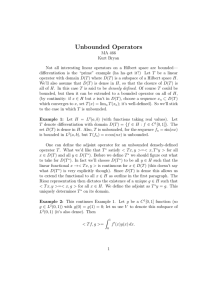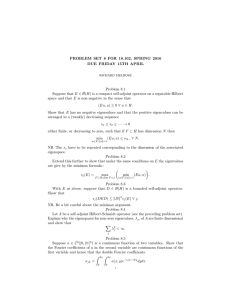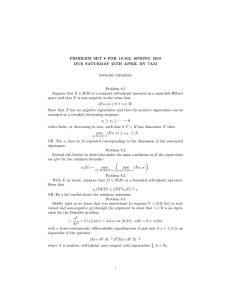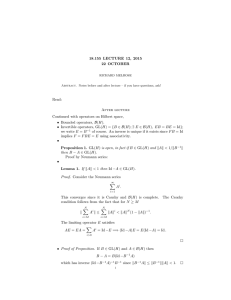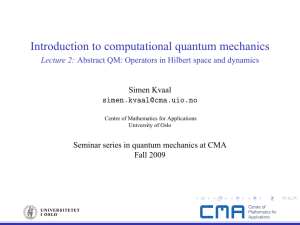PROBLEM SET 7, 18.155 DUE FRIDAY 1, NOVEMBER 2013
advertisement
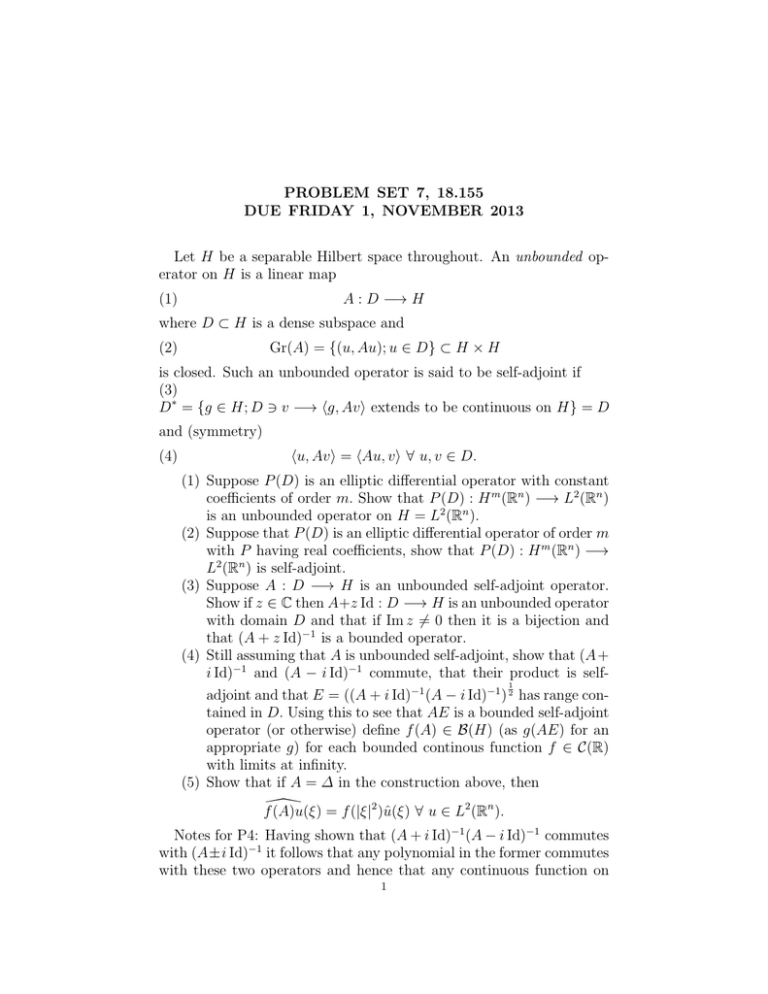
PROBLEM SET 7, 18.155
DUE FRIDAY 1, NOVEMBER 2013
Let H be a separable Hilbert space throughout. An unbounded operator on H is a linear map
A : D −→ H
(1)
where D ⊂ H is a dense subspace and
Gr(A) = {(u, Au); u ∈ D} ⊂ H × H
(2)
is closed. Such an unbounded operator is said to be self-adjoint if
(3)
D∗ = {g ∈ H; D 3 v −→ hg, Avi extends to be continuous on H} = D
and (symmetry)
(4)
hu, Avi = hAu, vi ∀ u, v ∈ D.
(1) Suppose P (D) is an elliptic differential operator with constant
coefficients of order m. Show that P (D) : H m (Rn ) −→ L2 (Rn )
is an unbounded operator on H = L2 (Rn ).
(2) Suppose that P (D) is an elliptic differential operator of order m
with P having real coefficients, show that P (D) : H m (Rn ) −→
L2 (Rn ) is self-adjoint.
(3) Suppose A : D −→ H is an unbounded self-adjoint operator.
Show if z ∈ C then A+z Id : D −→ H is an unbounded operator
with domain D and that if Im z 6= 0 then it is a bijection and
that (A + z Id)−1 is a bounded operator.
(4) Still assuming that A is unbounded self-adjoint, show that (A+
i Id)−1 and (A − i Id)−1 commute, that their product is self1
adjoint and that E = ((A + i Id)−1 (A − i Id)−1 ) 2 has range contained in D. Using this to see that AE is a bounded self-adjoint
operator (or otherwise) define f (A) ∈ B(H) (as g(AE) for an
appropriate g) for each bounded continous function f ∈ C(R)
with limits at infinity.
(5) Show that if A = ∆ in the construction above, then
f\
(A)u(ξ) = f (|ξ|2 )û(ξ) ∀ u ∈ L2 (Rn ).
Notes for P4: Having shown that (A + i Id)−1 (A − i Id)−1 commutes
with (A±i Id)−1 it follows that any polynomial in the former commutes
with these two operators and hence that any continuous function on
1
2
PROBLEM SET 7, 18.155 DUE FRIDAY 1, NOVEMBER 2013
the spectrum defines an operator which commutes with them. Thus E
commutes with (A ± i Id)−1 from which it follows that E : D −→ D. A
similar argument shows that [E, A]v = 0 if v ∈ D. Now, compute the
norm
kAEvk2H = hEAv, EAviH , v ∈ D.
The adjoint identity works here to shows this is equal to
(5)
hv, (Id −E)viH
and hence that AE extends by continuity to a bounded operator on H.
The definition of self-adjointness shows that E : H −→ D.
Now you should define g by f (x) = g( √xx2 +1 ) and show that g is
defined and continuous on [−1, 1] which contains the spectrum of AE.
